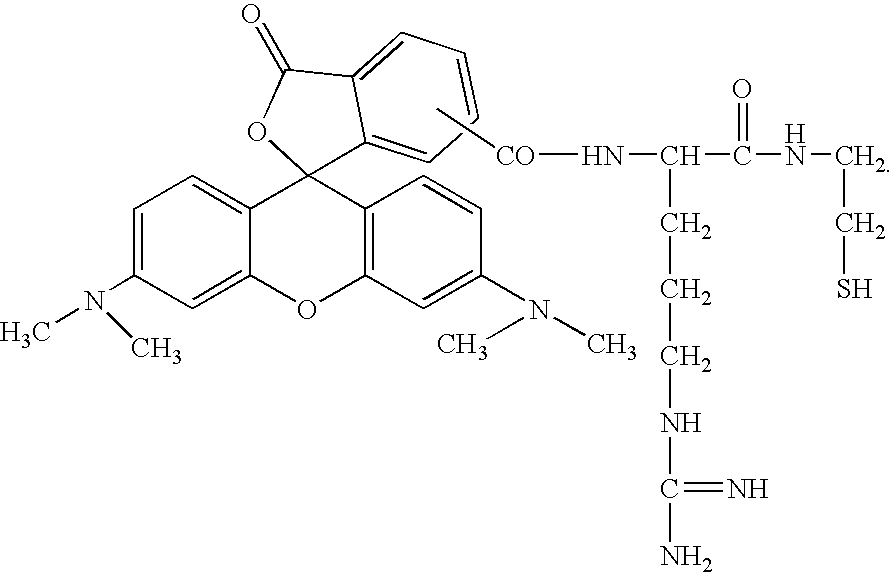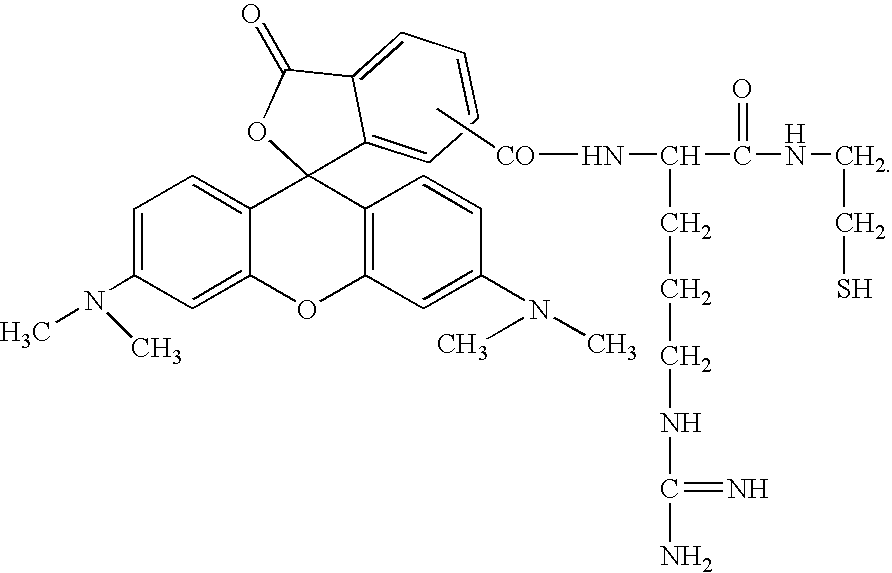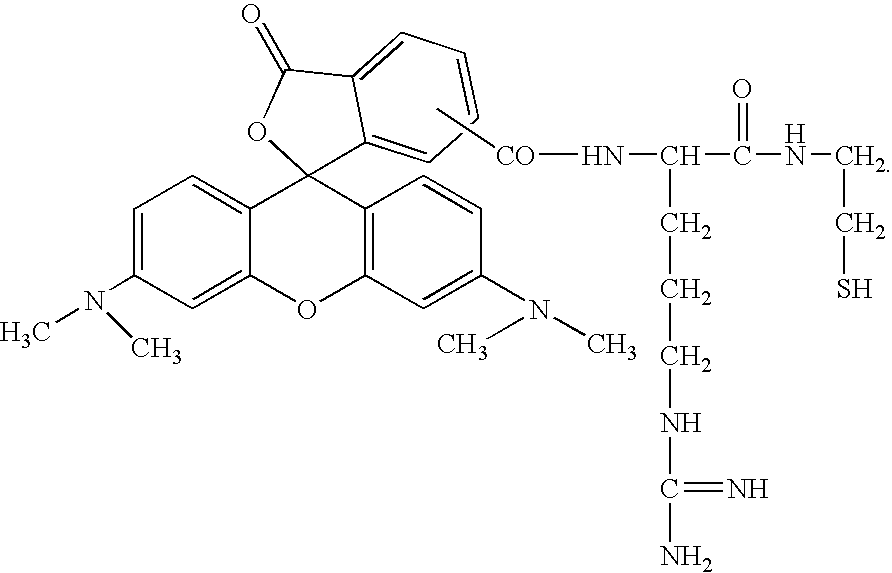Fluorescent affinity tag to enhance phosphoprotein detection and characterization
- Summary
- Abstract
- Description
- Claims
- Application Information
AI Technical Summary
Benefits of technology
Problems solved by technology
Method used
Image
Examples
example 1
Purification of Affinity Tag
[0030] A microaffinity column was prepared as follows. Two microliters of Poros Protein G (Applied Biosystems) slurry was incubated with 10 μL of 1 μg / μL anti-rhodamine antibody (Abcam) solution in PBS for 1 hr at 4° C. A gel-loader tip was crimped, packed with the Protein G slurry, and washed three times with PBS.
[0031] A 500 fmol myoglobin digest was prepared and spiked with a dilute amount of the FAT reagent. It was not expected that the FAT reagent would react with the peptides of the myoglobin digest because conditions for beta-elimination and Michael addition were not employed. A mass spectrum was taken of the mixture and is presented in FIG. 6 (top trace). The expected profile for the FAT reagent is not prevalent in this mass spectrum due to the relatively more abundant myoglobin-derived species.
[0032] The FAT-reagent-containing myoglobin digest was then passed through the microaffinity column several times to ensure maximum binding of the FAT r...
example 2
Analysis by Mass Spectroscopy of FAT-Labeled HPLC-Purified Tryptic Phosphopeptide of beta-Casein
[0033] A sample of beta-casein protein was digested with trypsin and the monophosphorylated peptide FQSEEQQQTEDELQDK was purified by HPLC. The purified tryptic peptide was subjected to conditions appropriate for beta-elimination of phosphate as described in Knight, et al.; Nat. Biotech., 2003, 21, 1047-1054. After incubation for 1-2 hours at room temperature, Michael addition of the FAT reagent was carried out for an additional 3-6 hours at room temperature.
[0034]FIG. 1 presents a mass spectrum used for general screening of reaction progress for the beta-elimination / Michael addition reactions. Ions associated with the partially derivatized peptide (i.e. after beta elimination) are present at a relatively low abundance, while ions associated with the fully derivatized peptide (i.e. after Michael addition of the FAT label) are much more prevalent.
[0035] The derivatized peptide was subseq...
example 3
In-Gel Fluorescence Detection and Proteolytic Digestion Followed by Affinity Purification and Analysis by Mass Spectroscopy
[0036] A sample of beta-casein protein was subjected to conditions appropriate for beta-elimination of phosphate. After incubation for 1-2 hours at room temperature, Michael addition of the FAT reagent was carried out for an additional 3-6 hours at room temperature.
[0037] Following labeling of the beta casein protein, the protein mixture was separated by ID SDS-PAGE and the gel was analyzed by a Typhoon 8600 variable mode imager (Amersham Pharmacia Biotech) to map the presence of FAT-labeled phosphoproteins present in the sample. FIG. 4 shows an example of an SDS-PAGE gel containing FAT-labeled beta-casein as imaged by the Typhoon 8600 instrument. Also illustrated is a MALDI plate spotted with different quantities of the FAT reagent alone and imaged by the Typhoon 8600 instrument to demonstrate the sensitivity of the technique to small quantities of FAT label....
PUM
| Property | Measurement | Unit |
|---|---|---|
| Composition | aaaaa | aaaaa |
| Mass | aaaaa | aaaaa |
| Reactivity | aaaaa | aaaaa |
Abstract
Description
Claims
Application Information
 Login to View More
Login to View More - R&D
- Intellectual Property
- Life Sciences
- Materials
- Tech Scout
- Unparalleled Data Quality
- Higher Quality Content
- 60% Fewer Hallucinations
Browse by: Latest US Patents, China's latest patents, Technical Efficacy Thesaurus, Application Domain, Technology Topic, Popular Technical Reports.
© 2025 PatSnap. All rights reserved.Legal|Privacy policy|Modern Slavery Act Transparency Statement|Sitemap|About US| Contact US: help@patsnap.com



